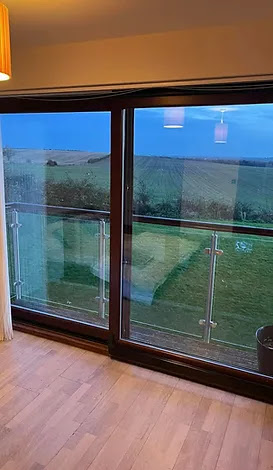How to Choose the Right uPVC Window Style for Your Home
Selecting the right uPVC window style for your home is crucial for enhancing both its appearance and functionality. uPVC windows are popular for their durability, energy efficiency, and low maintenance requirements. However, with various styles available, it’s essential to choose one that suits your home’s design and your personal preferences. This guide will help you navigate the options and find the perfect uPVC window style for your home.
Understanding Different uPVC Window Styles
1. Casement Windows
Description: Casement windows are hinged on one side and open outward. They are one of the most common uPVC window styles and are known for their versatility.
Advantages:
- Excellent ventilation due to full opening.
- Easy to clean as they can be accessed from inside.
- Secure locking mechanisms provide added safety.
Considerations: Ideal for homes where windows open outward without obstruction. They are also commonly used in double glazing installations for enhanced energy efficiency.
2. Sash Windows
Description: Sash windows feature one or more movable panels or “sashes” that slide vertically or horizontally. They are often chosen for their classic, elegant look.
Advantages:
- Timeless appeal that suits traditional and period properties.
- Allows for easy ventilation by sliding the sashes.
- Typically equipped with robust locking mechanisms.
Considerations: Best suited for homes with a traditional aesthetic. They may require more maintenance compared to other styles and are often paired with window repairs and window replacement to maintain their charm.
3. Tilt and Turn Windows
Description: Tilt and turn windows offer two modes of operation: tilting inwards for ventilation or turning fully open for easy cleaning and maximum airflow.
Advantages:
- Flexible ventilation options with two opening modes.
- Easy to clean from inside.
- Suitable for both modern and traditional homes.
Considerations: Ideal for properties where space is limited and you want maximum versatility. They can also be integrated into bifold windows and composite doors setups for a cohesive look.
4. Bay and Bow Windows
Description: Bay windows extend outward from the main walls, creating a “bay” that adds additional space and a panoramic view. Bow windows are similar but curve outwards more gently.
Advantages:
- Adds architectural interest and extra space inside.
- Provides wider views and more natural light.
- Enhances the curb appeal of your home.
Considerations: Requires more space both inside and outside. Suitable for properties where space is not an issue. They can complement conservatories and outdoor areas beautifully.
5. Fixed Windows
Description: Fixed windows do not open and are used primarily for enhancing the aesthetics and letting in natural light.
Advantages:
- Maximises natural light and unobstructed views.
- Simple design that requires minimal maintenance.
- Highly energy-efficient due to the lack of moving parts.
Considerations: Best for areas where ventilation is not needed. They can be a good choice for modern home designs and often work well in uPVC installations.
Factors to Consider When Choosing uPVC Window Styles
1. Architectural Style of Your Home
Choose a window style that complements your home’s architecture. For modern homes, sleek casement or tilt and turn windows work well. In contrast, sash windows are perfect for traditional or period properties. Ensure that the chosen style aligns with your overall design, including any planned window replacement or double glazing installations.
2. Functionality Needs
Consider how you use the space where the window will be installed. For example, if you need ample ventilation and easy cleaning, tilt and turn windows might be the best choice. If space is limited, opt for styles that open inward rather than outward. Bifold windows can also provide flexible solutions in this regard.
3. Aesthetic Preferences
The appearance of your windows can greatly impact your home’s overall look. Select a style that aligns with your aesthetic preferences and enhances the visual appeal of your home. For instance, combining sash windows with composite doors can create a sophisticated entrance.
4. Energy Efficiency
uPVC windows are known for their excellent energy efficiency. Ensure that the window style you choose has good insulation properties to help keep your home comfortable and reduce energy costs. Double glazing installations are particularly effective in this regard.
5. Maintenance Requirements
Different window styles have varying maintenance needs. If you prefer low-maintenance options, fixed windows or casement windows are suitable. For those willing to invest time, sash windows offer classic charm. Regular window repairs and proper care will ensure longevity.
Conclusion
Choosing the right uPVC window style involves balancing aesthetics, functionality, and personal preferences. By understanding the different styles available and considering factors such as your home’s architecture, functionality needs, and maintenance requirements, you can make an informed decision. Whether you opt for the classic elegance of sash windows or the modern versatility of tilt and turn windows, selecting the right style will enhance both the beauty and efficiency of your home. Take your time to evaluate your options, and consider integrating your choice with other elements like bifold windows and outdoor pizza ovens for a cohesive home design.

.jpeg)


Comments
Post a Comment